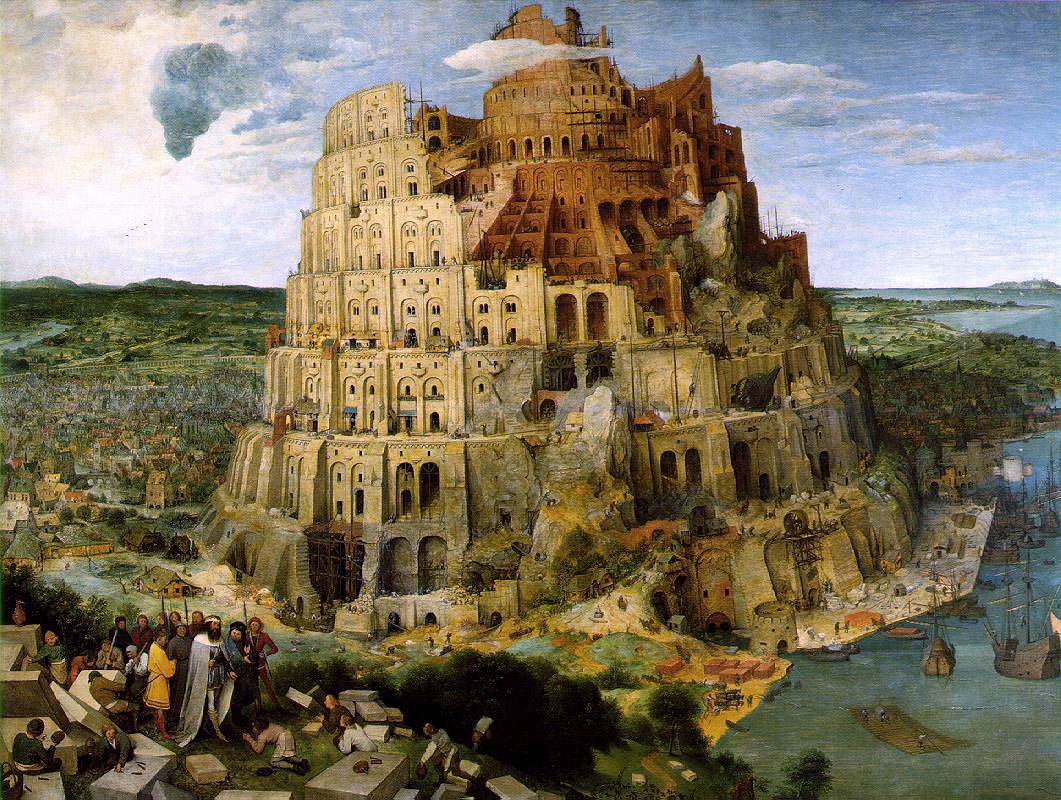 |
| Peter Brueghel's Tower of Babel |
There's a lens on Squidoo: Artist Study, Charlotte Mason Style. Right off the bat is a suggestion that would make my life easier: stay with the same artist for quite a while. Four weeks at a minimum. We did Peter Brueghel for a while, using a library book, but then I never figure out what to do after we looked at the book. But at the time, I thought that we'd do a bunch of different artists, maybe one a week or more. I can see that not needing to choose a new one all the time would at the very least aid consistency. This lens also pointed out some pages in Miss Mason's books that deal with working with art.
The minds of children and of their elders alike accommodate themselves to what is put in their way; and if children appreciate the vulgar and sentimental in art, it is because that is the manner of art to which they become habituated. -Charlotte Mason (Vol. 1, Page 308)
 |
| Sir Edwin Landseer's Alexander And Diogenes |
Picture-Talk
Objects
Step 1 - Ask the children if they remember what their last picture talk was about, and what artist was famous for animal painting. Tell them Landseer was acquainted with animals when he was quite young: he had dogs for pets, and because he loved them he studied them and their habits -so was able to paint them.
- To continue the series of Landseer's pictures the children are taking in school.
- To increase their interest in Landseer's works.
- To show the importance of his acquaintance with animals.
- To help them read a picture truly.
- To increase their powers of attention and observation.
Step 2 - Give them the picture 'Alexander and Diogenes' to look at, and ask them to find out all they can about it themselves, to think what idea the artist had in mind, and what idea or ideas he meant his picture to convey to us.
Step 3 - After three or four minutes, take the picture away and see what the children have noticed. Then ask them what the different dogs suggest to them: the strength of the mastiff representing Alexander; the dignity and stateliness of the bloodhounds in his rear; the rather contemptuous look of the rough-haired terrier in the tub. Ask the children if they have noticed anything in the picture which shows the tine of day: for example, the tools thrown down by the side of the work-man's basket suggesting the mid-day meal; and the bright sunshine on the dogs who cast a shadow on the tub shows it must be somewhere about noon.
Step 4 - Let them read the title, and tell any facts they know about Alexander and Diogenes; then tell them Alexander was a great conqueror who lived BC 356-323, famous for the battles he won against Persia, India, and all along the coast of the Mediterranean. He was very proud, strong, and boastful. Diogenes was a cynic philosopher. Explain cynic, illustrating by the legend of Alexander and Diogenes; and from it find out which dog represents Alexander and which Diogenes.
Step 5 - Let the children draw the chief lines of the picture, in five minutes, with pencil and paper.(Vol. 1 Pg. 309-310)
 |
| Jean Monet's Woman With a Parasol |
Jimmie also shares what this sort of thing looks like in their homeschool. The example she shares comes from their work with Renoir, which includes daily work looking at his paintings, and also a project recreating one of his works. I really like a number of things she says, but this one, in particular, resonates:
I pointed out all the ways that her rendition matched Renoir's original and praised her. Then I asked her to place her work alongside his and point out what was different or lacking in her version. In this way, I am not criticizing her work but I am teaching her to look critically at art.
Another useful link is this list of questions to ask about the work. I would not have thought of most of these. There's some good conversation starters.
This blog post points out that it's easier to remember to do something if it's done daily, rather than weekly, and she also says not to get too hung up on choosing the artist.
As for who we'll make our fisrt artist? I don't know. My husband suggested Dan Scott. I'm thinking that this artist is one whose art will appeal to Hero, and that seems especially important for the first artist, so we may just do that.
For updates on how our artist study is going, follow me on Facebook.


2 comments:
Alex Ross is another awesome artist who specializes in super heros.. Love his work.
Hmmm. We'll have to have a look at him as well. Thanks!
Post a Comment